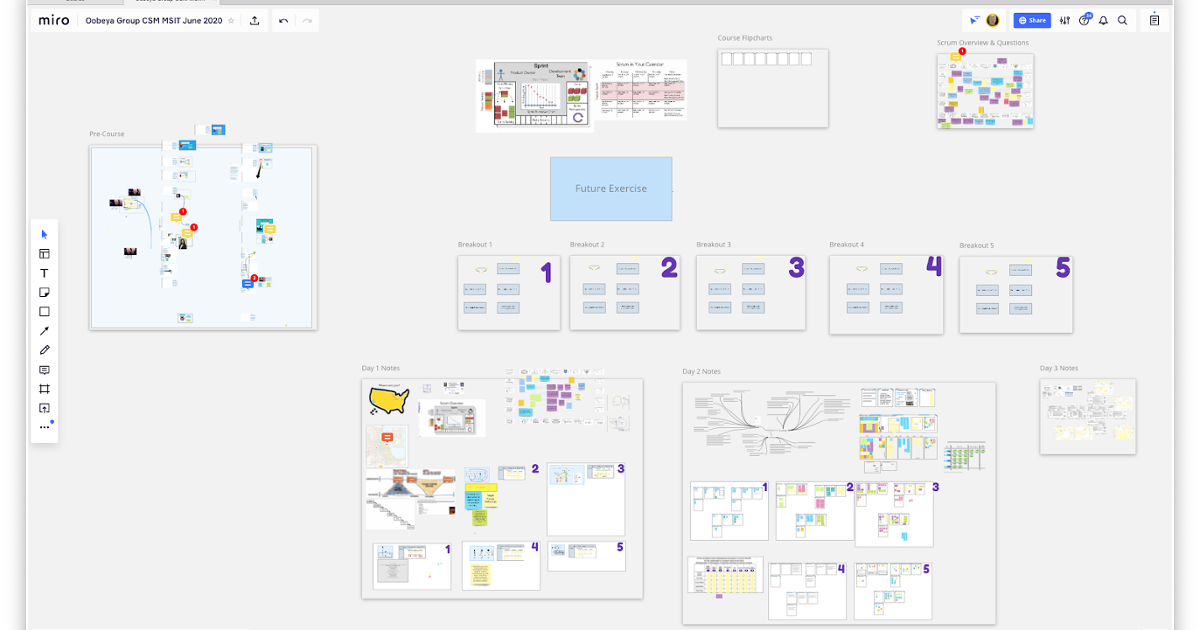MSIT ScrumMasters Learn to Collaborate Remotely
Northwestern Engineering students and alumni recently earned a distinct certification during the COVID-19 pandemic.

Teachers across the country have faced new challenges in 2020 as the COVID-19 pandemic forced schools of all levels to go online or present a hybrid form of in-person and remote learning opportunities. How do you take a classroom setting and transfer it to a virtual experience?
For Lowell Lindstrom, an adjunct lecturer in Northwestern Engineering's Master of Science in Information Technology (MSIT) program, the transition was particularly unique. Lindstrom is among the early pioneers in Agile software development, which is an approach that is based on adaptability and breaks down a project into smaller sections to make it more flexible and efficient.
A key component of Agile is collaboration, but how do you collaborate remotely? That was the question Lindstrom found himself trying to answer this past summer when he led a virtual Certified ScrumMaster class for MSIT students and alumni. The ScrumMaster certification is a differentiator for job applicants, particularly in the IT field, Lindstrom said. IT is rooted in software, and software can be modified very quickly since it's digital. There are few production and distribution costs. What that means is change can frequently happen, and that change can alter the pre-existing development plan.
"As a facilitator and instructor, I like to use things students can do sitting around the table, like a card game, pipe cleaners, even marshmallows, to tactically create collaborative learning experiences," Lindstrom said. "How do you take that experience and the learning that comes from it and move it to a digital experience?"
Lindstrom answered his question with Miro and Mural, online whiteboard platforms used for remote teams. Users are able to interact and work either asynchronously or synchronously on the digital board. More simplistically, Lindstrom liked it because it broke up the monotony of staring at the same faces for hours on end.
"Zoom fatigue is a real thing now, and lectures are not really the most effective way to teach people online," he said. "The online whiteboards were a great success. It gave students a different focal point and had them not staring at the "Brady Bunch" screen of faces."
The Certified ScrumMaster class was an extracurricular opportunity that gave students and alumni the opportunity to receive official certification from the Scrum Alliance. Scrum is a framework within Agile that acknowledges and helps teams adapt to the uncertainties and unpredictability of complex problems.
"As the world becomes more complex and our ability to predict what is going to happen in the future is diminished, a lot of the traditional approaches to planning and how we do projects needs to shift," Lindstrom said. "For those problems that are impacted by uncertainty, the Scrum framework has become the dominant approach for managing those problems."
Lindstrom said that Scrum and Agile have become buzzwords in the IT field, and unfortunately that has led some people to be more focused on naming the approach they take as opposed to understanding its components. The students and alumni who took his ScrumMaster certification course will be more adept at managing change, he said
"The industry has become fixated on what Scrum and Agile is at the expense of their customers," Lindstrom said. "My students can be a voice of reason and clarity at their companies. They can use the techniques we use in class and what we learn to influence constructive change as opposed to just advocating a specific approach."
Lindstrom also teaches Agile IT Leadership as a five-week course within the MSIT program.

